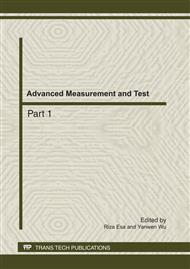p.1477
p.1482
p.1489
p.1495
p.1501
p.1507
p.1511
p.1517
p.1522
Research on Brushless DC Motor Speed Control System Based on Passivity-Based Control
Abstract:
Because the nonlinear and strong coupling characteristics of brushless DC motor, the classical PI controller can not control it easily. In order to solve the control problem of brushless DC motor, an improved control method is proposed which based on passivity-based control technology. According to a model of brushless DC motor (BLDCM) that based on Euler -Lagrange (EL) equation, designed a passivity-based controller. The simulation result shows that,compared with the PI controller,this method can not only improve the dynamic response property and anti-jamming ability of the system, but also get a better speed-adjustability.
Info:
Periodical:
Pages:
1501-1506
Citation:
Online since:
July 2011
Authors:
Price:
Сopyright:
© 2011 Trans Tech Publications Ltd. All Rights Reserved
Share:
Citation:


